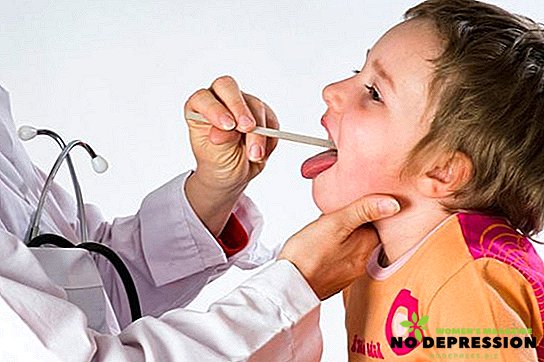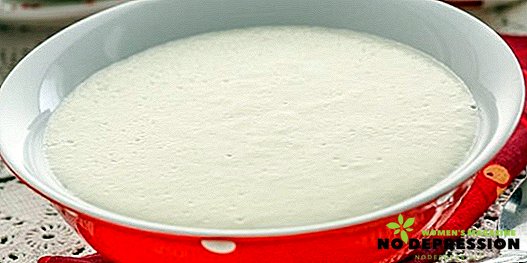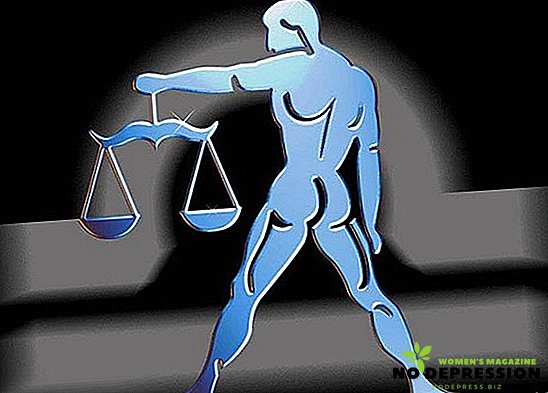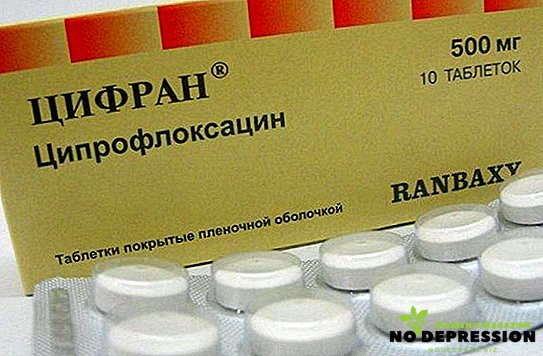Laryngitis is an inflammatory disease that affects the vocal cords. This pathology is treated with the help of medicines and folk remedies. It is also very important to remember about prevention, to avoid the appearance of pathology.

What is laryngitis?
Laryngitis is an inflammation of the vocal cords that are in the larynx. The larynx itself is located on the border with the trachea. In the same area there is an epiglottis, whose function is to prevent food from entering the larynx when swallowing. The larynx also contains the vocal cords, two folds of the mucous membrane that cover the muscles and cartilage. Usually, the ligaments close and open very smoothly, creating sounds with the help of vibrations and movements.
But when a child has laryngitis, these ligaments become inflamed and very irritated. Laryngitis can cause a distortion of the sounds, which conveys hoarseness to the voice. It happens that the extent of the disease is so serious that the voice actually disappears.
Due to the age, the pediatric nasopharynx cannot properly contain pathogens that penetrate, which is why harmful organisms fall directly into the throat.
For an adult, laryngitis usually delivers only a little discomfort, but an inflammatory process in a child can lead to big problems due to a very narrow throat.
One of the most frequent complications of acute laryngitis is the transition to the chronic form. A constantly recurring disease can lead to a complete loss of voice. Doctors warn about the following complications that may threaten the child's life: inflammation of the epiglottis, stenosis of the larynx, abscess. In addition, the chronic course of the disease can lead to impaired blood circulation and laryngeal functions. This pathology can cause the transformation of mucosal cells into cancer cells.
The main causes of the disease
Depending on the reason for the origin of laryngitis can be:
- infectious, that is, it is caused by viruses or bacteria;
- allergic, which develops due to inhalation of potential allergens;
- psychoemotional, which appears on the background of stress, experiences, or prolonged crying of children.
Most often, children have laryngitis of viral origin, and influenza viruses, herpes viruses, and adenoviruses can provoke its development. Bacterial laryngitis is less common. It is characterized by a more severe course of the disease, in most cases it develops as a complication of nasopharyngeal inflammatory processes.
The following factors contribute to their development: hypothermia, rhinitis, inflammation of the adenoids, weak immune systems, unbalanced nutrition, hypovitaminosis.
Allergic laryngitis develops during inhalation of vapors of varnish, gasoline, tobacco smoke, when in contact with pets, and so on. In case of prolonged tension of the vocal apparatus, laryngitis may also develop on the background of stress or mental tension, this pathology is often complicated by laryngism.
Diseases of the organs of the digestive tract can also contribute to the inflammatory process, in which case the contents of the stomach are thrown into the esophagus and pharynx, irritating the tissues.
Main symptoms and types of laryngitis
Symptoms of this pathology appear, as a rule, unexpectedly. In most cases, the first signs appear in the morning on waking or in the middle of the night, when the parents and the child are sleeping peacefully. The clinical picture includes the appearance of nasal discharge, hoarseness, dry cough. Also, children have such characteristic symptoms as pain during swallowing, feeling of a foreign object in the larynx, loss of voice, wheezing, barking cough, wheezing, choking. Body temperature can rise to +39 degrees, the skin around the mouth usually turns blue.
Acute Chronic Laryngitis
 Acute laryngitis is most often accompanied by both sore throat and fever. On the development of this form of pathology can also indicate edema, hyperemia of the mucous membrane of the larynx, at this time dots of dark red color appear on it. The vocal cords become thick, the folds of the vestibule redden and swell up. In children, a similar form of the disease develops incredibly quickly - in just two days, but it does not take long.
Acute laryngitis is most often accompanied by both sore throat and fever. On the development of this form of pathology can also indicate edema, hyperemia of the mucous membrane of the larynx, at this time dots of dark red color appear on it. The vocal cords become thick, the folds of the vestibule redden and swell up. In children, a similar form of the disease develops incredibly quickly - in just two days, but it does not take long.
With proper treatment, you can cure the child in just a week. If the inflammatory process becomes chronic, then the clinical picture changes. The main symptom of chronic laryngitis is a clearly altered voice. Also, pathology may be accompanied by coughing, hoarseness, sore throat. But breathing problems, as in acute form, does not occur. The disease can be delayed indefinitely.
The main forms of inflammation of the larynx
Laryngitis is complicated and uncomplicated. Complications develop if the patient neglects treatment or the pediatrician has chosen the wrong treatment strategy. Also, doctors identify four main forms of the inflammatory process that develop in the larynx, and each of them has characteristics and features:
- Obstructive false croup. Its characteristic feature is that it begins suddenly, but in the first few days the clinical picture is similar with ARVI. It may be accompanied by a temperature increase of up to 39 degrees. Catarrhal symptoms increase over the next three days. Most often, this pathology affects children under 3 years. In infants from 6 to 12 months, the disease develops less frequently. In children older than 5 years, false croup is very rarely diagnosed.
- Allergic form. This process is of non-infectious origin, triggered by irritants. It is dangerous in that it can cause spasms of the upper respiratory tract, edema, weakening of the immune system. Therefore, allergic laryngitis is often complicated by bacterial infections.
- Catarrhal form. The clinical picture is as follows: a slight increase in temperature, pain when swallowing, redness of the larynx. It is considered one of the mildest forms of laryngitis. If you start the treatment in time, then literally 5 days is enough for complete recovery. The first two days become the most difficult: at this time the access of air to the larynx can be blocked as a result of swelling of the mucous membrane.
- Bacterial form. Early symptoms are similar to signs of other forms of disease. For 3 days on the surface of the mucous membrane may appear small ulcers, covered with a film of yellow color.
- Influenza form. It develops due to a lesion of streptococcus, an abscess is formed. This form of pathology is treated with antibiotics.
Diagnostic methods
 Laryngitis in many clinical signs similar to other diseases, but its clinical picture has specific signs. In this regard, the specialist will not be difficult to diagnose this pathology on the basis of the inspection and research results. Also for the diagnosis of laryngitis is necessary to consult a pediatrician and otolaryngologist.
Laryngitis in many clinical signs similar to other diseases, but its clinical picture has specific signs. In this regard, the specialist will not be difficult to diagnose this pathology on the basis of the inspection and research results. Also for the diagnosis of laryngitis is necessary to consult a pediatrician and otolaryngologist.
A visual examination assumes that the doctor will be able to assess the condition of the mucous membrane of the nose and throat, examine the cervical lymph nodes, become familiar with the complaints of the patient. If a child has laryngitis, then in the general blood test, the level of ESR and leukocytes will be increased.
To determine the pathogen that provoked the disease, the doctor should take a swab from the throat. If necessary, they can prescribe the following diagnostic methods: laryngeal stroboscopy, functional studies of the larynx, laryngoscopy, microlaryngoscopy, X-ray diagnostics.
Medications for laryngitis
Depending on the origin of the disease, antiviral drugs or antibiotics may be prescribed to children. To reduce mucosal edema and prevent the development of laryngospasm, antihistamines must be prescribed:
- Zodak;
- Loratadine;
- Claritin;
- Zyrtec
To stop the attacks of dry cough, cough suppressants are prescribed: Sinekod, Codeine, thermopsis herb. As soon as the attacks of barking cough diminish and sputum will not stand out in the process of coughing, antitussive drugs should be canceled and prescribed expectorant drugs to the child, such as: Ambroxol, Prospan, Gadelix, Lasolvan.

It is very important to remember that combining antitussive and expectorant drugs at the same time is prohibited, since this may cause the development of stagnation, and may also increase the risk of laryngospasm and bronchial obstruction. If the patient's body temperature rises above 38 degrees, an antipyretic agent should be given. For the treatment of children of primary school age, it is recommended to use the following paracetamol-based drugs: Panadol, Calpol, Efferalgan.
Topical preparations
In this pathology, local action preparations, which are produced in the form of sprays or aerosols, help the children well. They include antiseptics, emollients and anti-inflammatory agents. For the treatment of children use: Tantum Verde or Orasept. The medicine dispenser should be directed to the inner surface of the cheek, because if it comes into contact with the throat and at the same time inhaling, the medicine can cause laryngospasm.
Inhalation
When treating laryngitis in children, one of the means with the best effect is inhalation through a nebulizer. With the help of this device, it is possible to deliver medicine directly to the focus of inflammation. For inhalation use pharmaceutical solutions in ampoules, they are diluted in half with physiological sodium chloride solution.
For children, Miramistin, Lasolvan, Dekasan are most often used. Thermal inhalation in the acute course of laryngitis is not recommended, since exposure to heat on the neck area may cause increased blood flow to the larynx, which increases the risk of edema and laryngostenosis. Approximately on the fifth day of the relief of the acute inflammatory process, the patient may be prescribed physiotherapy, electrophoresis.

Classic inhalations
In the absence of a nebulizer, it is also possible to inhalate over ordinary boiled potatoes, but it is better to use medicinal herbs. The instruction is simple: pour 1 liter of water into a wide saucepan, pour three tablespoons of the dry mixture of chamomile, sage, and St. John's wort into it. Next, boil for 2-3 minutes, if desired, add a few teaspoons of soda. Ask your child to sit on the pan for 10-15 minutes.
Features of the treatment of laryngitis with home remedies
The following home procedures will also help to deal with this disease:
- the use of large quantities of warm liquids (at least 10 glasses per day);
- receiving decoctions of various herbs, fruit drinks, warm milk with honey and butter;
- gargling with a soda solution or solution with sea salt.
The use of compresses on the neck and chest area has a warming effect. They can be used with a variety of drugs, including vodka and alcohol. You can also use badger fat. The main thing is not to do warming compresses at elevated body temperature.
Baths with a warming effect are taken with the addition of various medicinal herbs and sea salt. When treating laryngitis, it is necessary to refrain from spicy seasonings, spices; it is also not recommended to smoke with a child, since all this can cause irritation of the larynx mucosa. The humidity of the air in the room where the patient is located must be at least 40%.
First aid for attack
If an attack occurs, parents should immediately call an ambulance brigade. Difficult breathing is a dangerous symptom, even if its manifestation seems insignificant. While specialists are on the way, you need to give the child first aid to alleviate the condition. It is recommended to do the following:
- give antipyretic if high fever;
- relieve a strong dry cough with a saline nebulizer;
- to ease spasms with antispasmodics, but it is very important to carefully read the instructions and pay attention to the dosage.
 If your baby has allergic laryngitis, then Suprastin or another antihistamine should be taken. To increase the level of air humidity in the apartment, turn on the humidifier or place several containers with water on the floor.
If your baby has allergic laryngitis, then Suprastin or another antihistamine should be taken. To increase the level of air humidity in the apartment, turn on the humidifier or place several containers with water on the floor.
It is advisable to give the child an alkaline drink in this period one tablespoon with an interval of 15 minutes, you can stir one teaspoon of soda in a liter of boiled water or buy a bottle of Borjomi.
You should also calm the child, because crying, nervous tension aggravates spasms of the larynx. Call an ambulance should be immediately at the first signs of asphyxiation. If you do not take these measures, then in just two hours deadly asphyxia can develop.
Prevention
Primary prevention includes:
- personal hygiene;
- exclusion of contacts with sick ARVI, flu and other colds;
- hardening of the child.
It is necessary to prevent hypothermia in the cold season, be sure to wear a scarf and hat. It is very important to maintain the freshness and humidity of the air in the apartment. Secondary prevention includes the timely treatment of nasopharyngeal disease, vaccination against childhood diseases, periodic preventive inhalation with forced contact with harmful substances.












